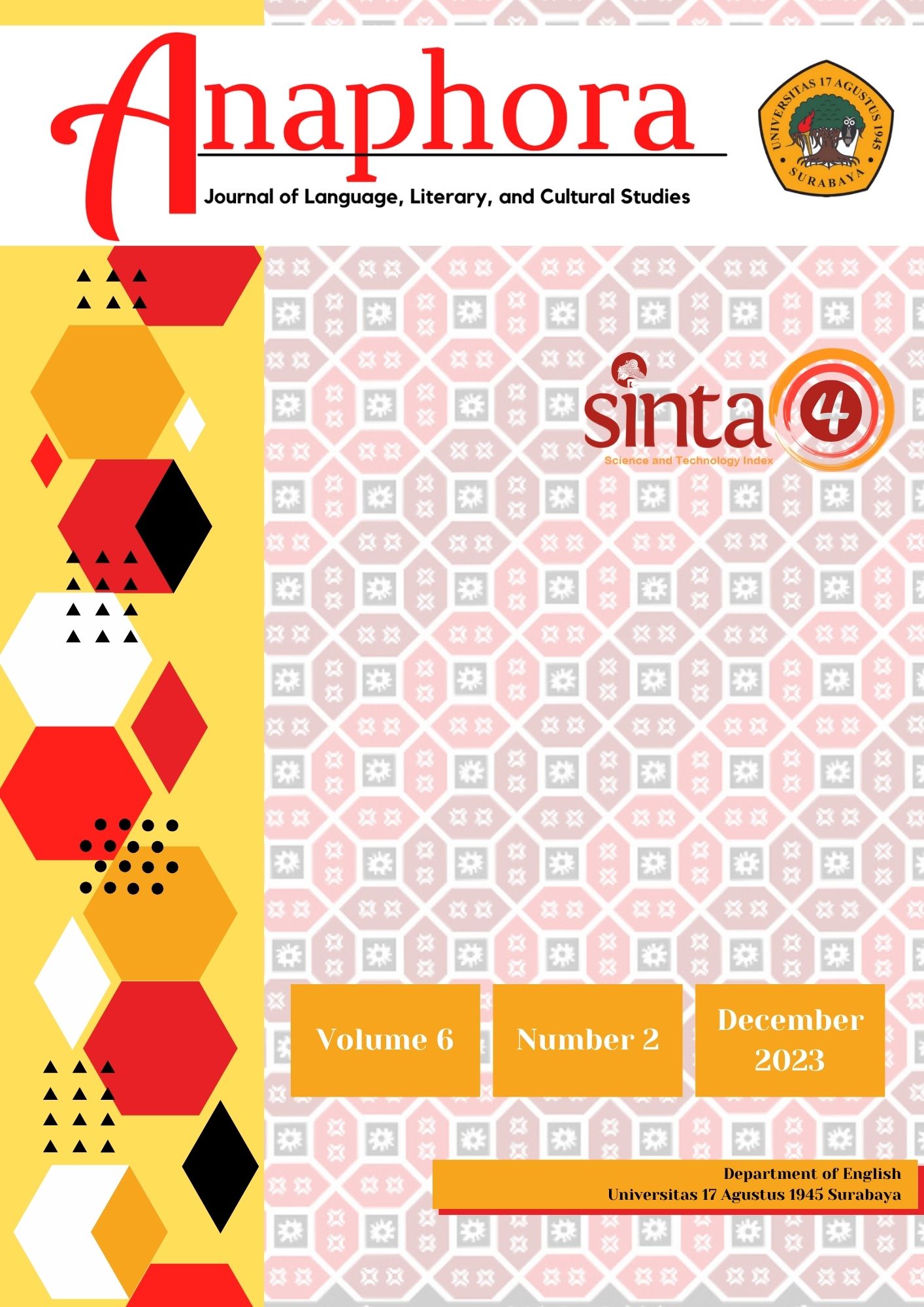English Registers of Hotels’ Signage in Surabaya
DOI:
https://doi.org/10.30996/anaphora.v6i2.9613Keywords:
limited envelope register, open envelope register, signage, language varietyAbstract
This study focuses on the concept of register in sociolinguistics and its relevance to the study of language usage in different domains. Registers represent specific language varieties associated with particular professional or social groups, characterized by distinct vocabulary and sentence structures. The study specifically is to identify the different registers used in hotel signage. In order to describe these registers, a qualitative descriptive research method was employed, as the data consisted of words, phrases, and long expressions extracted from hotels’ signage in Surabaya. The data were analyzed using descriptive analysis and semantic analysis, with a particular focus on Lexical Relations. The findings of the research revealed that the signage in Surabaya hotels can be categorized into two groups: Limited Envelope Register and Open Envelope Register. This study fills a gap in existing literature by providing a comprehensive analysis of the linguistic features and variations that characterize hotel signage, shedding light on the specific language choices and patterns employed in this context. The findings contribute to our understanding of sociolinguistic aspects within the hotel industry and the role of registers in language usage.
Downloads
Downloads
Published
How to Cite
Issue
Section
License
Authors whose manuscript is published will approve the following provisions:
-
The right to publication of all journal material published on the jurnal anaphora website is held by the editorial board with the author's knowledge (moral rights remain the property of the author).
-
The formal legal provisions for access to digital articles of this electronic journal are subject to the terms of the Creative Commons Attribution-ShareAlike (CC BY-SA) license, which means Jurnal Persona reserves the right to store, modify the format, administer in database, maintain and publish articles without requesting permission from the Author as long as it keeps the Author's name as the owner of Copyright.
-
Printed and electronic published manuscripts are open access for educational, research and library purposes. In addition to these objectives, the editorial board shall not be liable for violations of copyright law.















